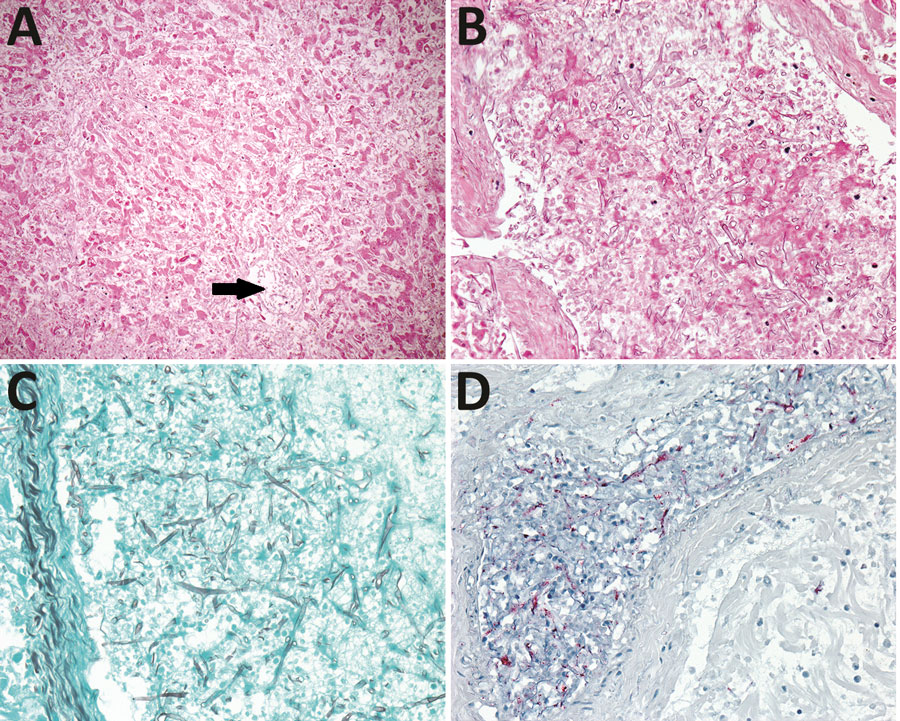Volume 29, Number 7—July 2023
Dispatch
Fatal Invasive Mold Infections after Transplantation of Organs Recovered from Drowned Donors, United States, 2011–2021
Figure

Figure. Invasive fungal infection in transplanted liver from an organ donor who drowned, United States (case 2). A) Centrilobular hepatic necrosis without substantial inflammation; fungal hyphae are in a central vein (arrow) and throughout the sinusoids. Hematoxylin–eosin; original magnification ×100. B) Numerous fungal hyphae are in the lumen and wall of a large hepatic vessel. Hematoxylin–eosin; original magnification ×200. C) Grocott methenamine silver stain highlights ribbon-like, pauciseptate, branching funal hyphae within the hepatic vessel. Original magnification ×200. D) Intravascular fungal hyphae stain red by immunohistochemical assay for mucormycete fungi. Original magnification ×200.
Page created: May 31, 2023
Page updated: June 20, 2023
Page reviewed: June 20, 2023
The conclusions, findings, and opinions expressed by authors contributing to this journal do not necessarily reflect the official position of the U.S. Department of Health and Human Services, the Public Health Service, the Centers for Disease Control and Prevention, or the authors' affiliated institutions. Use of trade names is for identification only and does not imply endorsement by any of the groups named above.